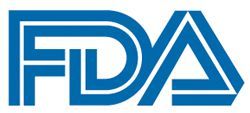News
Article
FDA Grants Accelerated Approval to Zenocutuzumab for NRG1+ NSCLC and Pancreatic Adenocarcinoma
Author(s):
Key Takeaways
- Zenocutuzumab-zbco is approved for advanced NSCLC and pancreatic adenocarcinoma with NRG1 gene fusion after prior therapy failure.
- This approval represents the first systemic therapy for NRG1 fusion-positive NSCLC or pancreatic adenocarcinoma.
The FDA granted accelerated approval to zenocutuzumab for select patients with NSCLC and pancreatic adenocarcinoma with NRG1 fusions.
FDA

The FDA has granted accelerated approval to zenocutuzumab-zbco (Bizengri) for adult patients with advanced, unresectable, or metastatic non–small cell lung cancer (NSCLC) harboring an NRG1 gene fusion with disease progression on or after prior systemic therapy; or advanced, unresectable, or metastatic pancreatic adenocarcinoma harboring an NRG1 gene fusion with disease progression on or after prior systemic therapy.1
The regulatory decision marks the first approval of a systemic therapy for patients with NRG1 fusion–positive NSCLC or pancreatic adenocarcinoma.
The approval was supported by data from the phase 2 eNRGy trial (NCT02912949), which showed that patients with NSCLC (n = 64) achieved an overall response rate (ORR) of 33% (95% CI, 22%-46%) and a median duration of response (DOR) of 7.4 months (95% CI, 4.0-16.6). In patients with pancreatic adenocarcinoma (n = 30), the ORR was 40% (95% CI, 23%-59%), and the DOR ranged from 3.7 months to 16.6 months.
eNRGy Trial Overview
The global, multicenter, open-label trial enrolled patients at least 18 years of age with locally advanced unresectable or metastatic solid tumors harboring NRG1 gene fusions who previously received or were unable to receive standard therapy.2 An ECOG performance status of 0 to 2 was also required.
All patients received zenocutuzumab at 750 mg once every 2 weeks until disease progression.
Investigator-assessed ORR per RECIST 1.1 criteria served as the trial's primary end point. Secondary end points included ORR per central review, DOR, and safety.
Additional NSCLC Data
Findings presented at the 2023 ESMO Congress showed that in the primary efficacy population (n = 78), the ORR was 37.2% (95% CI, 26.5%-48.9%) per investigator assessment. The clinical benefit rate was 61.5% (95% CI, 49.8%-72.3%).
The median DOR was 14.9 months (95% CI, 7.4-20.4). The 6- and 12-month DOR rates were 81% (95% CI, 60%-92%) and 57% (95 CI, 34%-75%), respectively.
The median duration of treatment exposure was 7.4 months (range, 0.3-36.2), and the median time to response was 1.8 months (range, 1.5-13.0).
Expanding on Pancreatic Adenocarcinoma Data
Additional data from the pancreatic adenocarcinoma cohort (n = 33) of the eNRGy trial were also presented at the 2023 ESMO Congress, which demonstrated that patients experienced an ORR of 42.4% (95% CI, 25.5%-60.8%), which included a complete response rate of 3% and a partial response rate of 39%; 45% of patients had stable disease, and the CBR was 72.7% (95% CI, 54%-87%).3
The median DOR was 9.1 months (95% CI, 5.5-12.0), and the 6-month DOR rate was 71% (95% CI, 41%-88%).
The median duration of treatment exposure was 9.4 months (range, 1.0-34.3), and the median time to response was 1.8 months (range, 1.6-5.4).
Pooled Safety Data

Regarding safety, the most common adverse effects reported in at least 10% of patients included diarrhea, musculoskeletal pain, fatigue, nausea, infusion-related reactions, dyspnea, rash, constipation, vomiting, abdominal pain, and edema.1
The most common grade 3 or 4 laboratory abnormalities that occurred in at least 10% of patients comprised increased gamma-glutamyl transferase level, decreased hemoglobin level, decreased sodium level, and decreased platelet count.
The prescribing information for zenocutuzumab includes a boxed warning for embryo-fetal toxicity.
Zenocutuzumab is recommended at a dose of 750 mg once every 2 weeks given until disease progression or unacceptable toxicity.
References
- FDA grants accelerated approval to zenocutuzumab-zbco for non-small cell lung cancer and pancreatic adenocarcinoma. FDA. December 4, 2024. Accessed December 4, 2024. https://www.fda.gov/drugs/resources-information-approved-drugs/fda-grants-accelerated-approval-zenocutuzumab-zbco-non-small-cell-lung-cancer-and-pancreatic
- Schram A, Goto K, Kim D-W, et al. Durable efficacy of zenocutuzumab, a HER2 x HER3 bispecific antibody, in advanced NRG1 fusion-positive (NRG1+) non-small cell lung cancer (NSCLC). Ann Oncol. 2023;34(suppl 2):S756-S757. doi:10.1016/j.annonc.2023.09.2349
- Schram A, Macarulla T, Cleary J, et al. Durable efficacy of zenocutuzumab, a HER2 x HER3 bispecific antibody, in advanced NRG1 fusion positive (NRG1+) pancreatic ductal adenocarcinoma (PDAC). Ann Oncol. 2023;34(suppl 2);S895-S896. doi:10.1016/j.annonc.2023.09.2567








